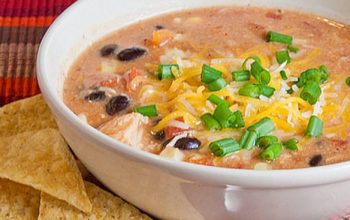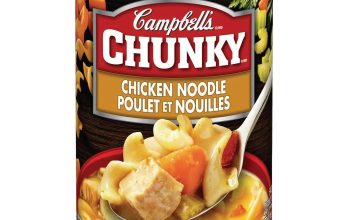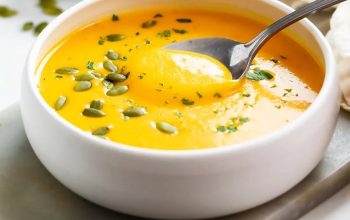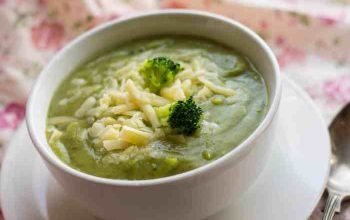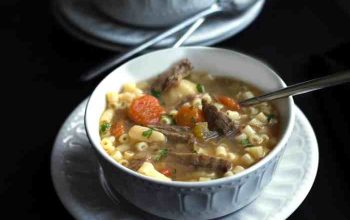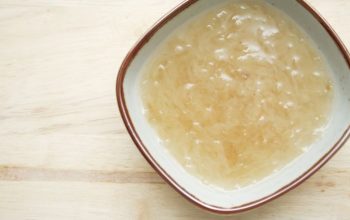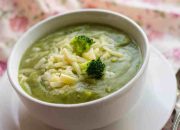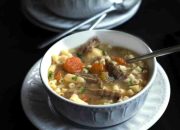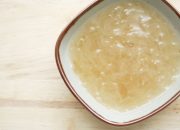Unlocking the Spiritual Alchemy of Crockpot Soups
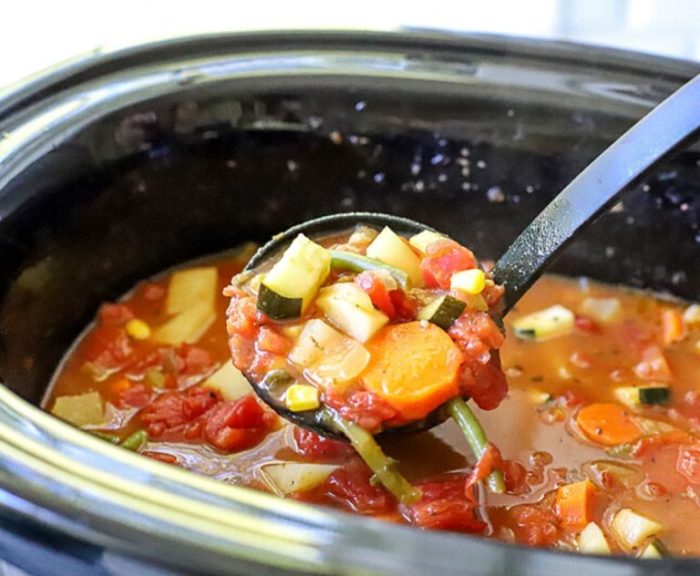
Source: suburbansimplicity.com
Soup in the crockpot recipe – The humble crockpot, a vessel of simmering transformation, offers more than just culinary convenience; it’s a gateway to mindful cooking and a deeper connection with the nourishing essence of food. Each bubbling spoonful is a meditation on simplicity, patience, and the profound satisfaction of creating something wholesome and delicious. This exploration delves into the art of crockpot soup making, weaving together practical techniques with a mindful approach to ingredient selection and preparation, ultimately revealing the spiritual nourishment inherent in this seemingly simple act.
Crockpot Soup Variations: A Culinary Journey
Five diverse crockpot soup recipes, each featuring a unique protein source, showcase the versatility of this cooking method. The recipes are designed to be adaptable to individual preferences and dietary needs, allowing for a personalized spiritual connection with the creation process.
- Chicken Tortilla Soup (6-8 hours on low): Chicken breast, diced tomatoes, corn, black beans, onions, garlic, chicken broth, chili powder, cumin, oregano.
- Beef Barley Soup (8-10 hours on low): Beef stew meat, barley, carrots, celery, potatoes, onions, beef broth, Worcestershire sauce, thyme.
- Pork Posole (8-10 hours on low): Pork shoulder, hominy, onions, garlic, chili powder, cumin, oregano, vegetable broth.
- Vegetarian Lentil Soup (6-8 hours on low): Lentils, carrots, celery, potatoes, onions, garlic, vegetable broth, curry powder, turmeric.
- Seafood Chowder (4-6 hours on low): Cod, clams, potatoes, corn, onions, celery, milk, butter, thyme.
| Soup Type | Calories (per serving) | Protein (per serving) | Fat (per serving) |
|---|---|---|---|
| Chicken Tortilla | 250-300 | 25-30g | 10-15g |
| Beef Barley | 300-350 | 30-35g | 15-20g |
| Pork Posole | 350-400 | 35-40g | 20-25g |
| Vegetarian Lentil | 200-250 | 15-20g | 5-10g |
| Seafood Chowder | 280-330 | 20-25g | 12-18g |
Texture variations in crockpot soups are achieved by adjusting cooking times and selecting ingredients with different cooking characteristics. Longer cooking times result in a more tender, almost melting texture for meats and vegetables, while shorter times preserve a firmer bite. Starchy vegetables like potatoes will break down more readily than firmer vegetables like carrots.
Ingredient Selection and Preparation: A Mindful Approach, Soup in the crockpot recipe
Preparing ingredients with intention enhances the overall quality and spiritual essence of the soup. Three methods for preparing vegetables ensure optimal texture and flavor.
- Large Dice: For robust vegetables that hold their shape well (carrots, potatoes).
- Small Dice: For vegetables that cook quickly and should be tender (onions, celery).
- Julienne: For delicate vegetables that add texture and visual appeal (zucchini, green beans).
Fresh ingredients offer a vibrant taste and superior nutritional value compared to frozen counterparts, however frozen vegetables can be a convenient and cost-effective alternative, particularly when fresh options are not readily available. Frozen vegetables, when used properly, can still deliver a satisfying and nutritious soup.
- Ingredient | Substitute
- Onions | Leeks, shallots
- Carrots | Sweet potatoes, parsnips
- Celery | Parsley root, fennel
- Potatoes | Sweet potatoes, turnips
- Beans | Lentils, chickpeas
Crockpot Soup Cooking Techniques: Mastering the Art of Slow Cooking
Proper liquid-to-solid ratios are crucial for achieving the desired consistency in crockpot soups. Too little liquid will result in a dry, burnt soup, while too much will create a watery broth. A general guideline is to ensure that the solid ingredients are mostly submerged in liquid.
Cooking times will vary depending on the type of crockpot (larger crockpots generally require longer cooking times), the ingredients used (tougher meats and denser vegetables require longer cooking times), and the desired level of tenderness.
- Soup Too Thin: Simmer uncovered for a longer period to reduce the liquid.
- Soup Too Thick: Add more broth or water to thin the consistency.
- Burning: Ensure that the ingredients are not clumped together at the bottom of the crockpot. Stir occasionally and add more liquid if needed.
Serving and Presentation: A Feast for the Senses
Elevating the presentation of crockpot soup transforms a simple meal into a mindful experience. Three creative garnishes enhance both visual appeal and flavor.
- Fresh Herbs: Chopped parsley, cilantro, or chives add a pop of color and freshness.
- Croutons: Homemade or store-bought croutons provide textural contrast.
- Sour Cream or Yogurt: A dollop of sour cream or yogurt adds a creamy element and tangy flavor.
Reheating leftover crockpot soup is best done gently on the stovetop or in the microwave to prevent scorching or uneven heating. Avoid reheating in the crockpot itself unless you are carefully monitoring the temperature to prevent burning.
| Soup Type | Bread Pairing |
|---|---|
| Chicken Tortilla | Tortilla chips, crusty bread |
| Beef Barley | Rye bread, sourdough |
| Pork Posole | Cornbread, flour tortillas |
| Vegetarian Lentil | Whole wheat bread, pita bread |
Recipe Adaptations and Customization: A Personalized Approach
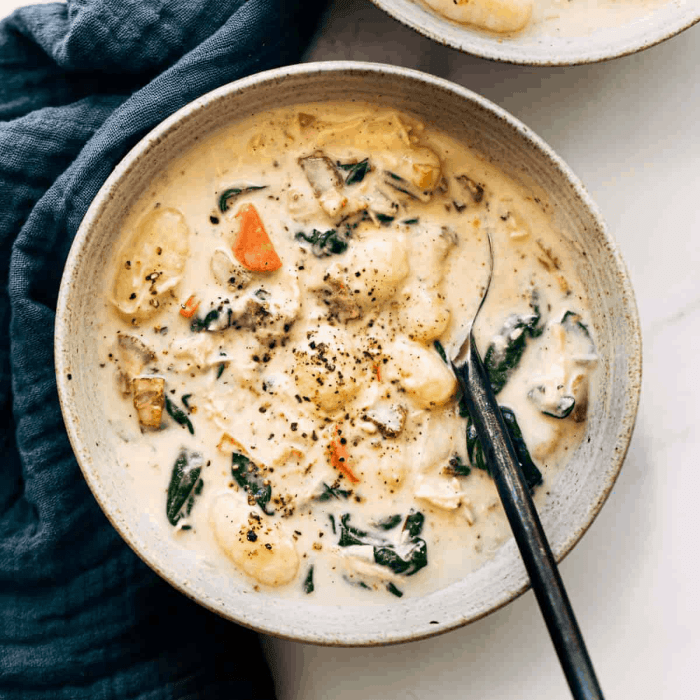
Source: pinchofyum.com
Adapting crockpot soup recipes to specific dietary needs allows for a more inclusive and personalized culinary experience.
- Low-Sodium: Reduce or eliminate added salt, use low-sodium broth, and season with herbs and spices.
- Gluten-Free: Use gluten-free broth and avoid ingredients containing gluten (e.g., barley, soy sauce).
- Vegan: Replace meat with plant-based proteins (e.g., tofu, tempeh), use vegetable broth, and avoid dairy products.
Leftover cooked meats and vegetables can be incorporated into new crockpot soup recipes to minimize food waste and add depth of flavor. For example, leftover roasted chicken can be added to a chicken noodle soup, while leftover roasted vegetables can be incorporated into a minestrone soup.
A perfectly cooked crockpot soup exhibits a vibrant color, a smooth and creamy consistency, and a tender texture. The color is determined by the ingredients used, while the consistency and texture are influenced by cooking time, liquid-to-solid ratio, and ingredient selection.
FAQ Guide: Soup In The Crockpot Recipe
Can I use frozen vegetables in crockpot soup?
Yes, frozen vegetables work well in crockpot soups. Just add them directly to the pot. They might release some extra water, so you may need to adjust the liquid accordingly.
How do I thicken my crockpot soup if it’s too thin?
Slow-cooked soups, simmering gently in the crockpot, offer unmatched comfort. For a hearty and surprisingly delicious twist, consider adding Brussels sprouts; check out these soup brussels sprouts recipes for inspiration. Then, simply transfer your perfectly tender crockpot base and incorporate the roasted sprouts for a final touch of flavour before serving – a simple yet elegant meal.
You can thicken your soup by adding a cornstarch slurry (mix cornstarch with cold water), a roux (butter and flour), or pureed potatoes or other vegetables.
What should I do if my crockpot soup is burning?
Reduce the heat setting, add more liquid, and stir the soup frequently to prevent burning. Make sure the ingredients aren’t sticking to the bottom of the pot.
Can I leave my crockpot soup on low overnight?
Generally, yes, but it depends on your crockpot and the ingredients. It’s best to check your recipe for specific instructions. Soups with dairy might separate after long cooking times.

